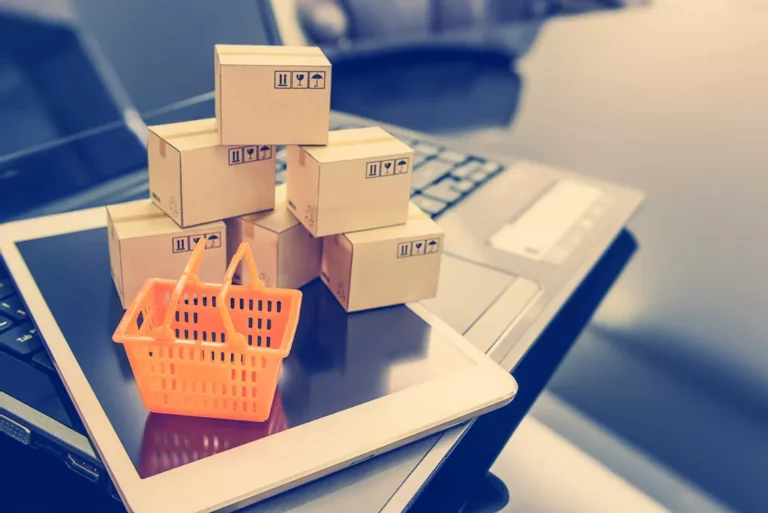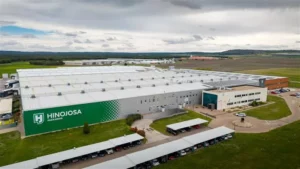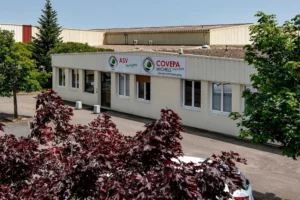Since Hinojosa obtained the Amazon FFP (Frustration Free Packaging) certification, together with all the members of Blue Box Partners, a lot has changed in that time. More than a year on from the start of the pandemic, there has been a seismic shift in ecommerce packaging that no-one could have predicted., Here, we will look at the key trends and impacts that were released at the last E-pack Europe event.
Since Hinojosa obtained the Amazon FFP (Frustration Free Packaging) certification, together with all the members of Blue Box Partners, a lot has changed in that time. More than a year on from the start of the pandemic, there has been a seismic shift in ecommerce packaging that no-one could have predicted., Here, we will look at the key trends and impacts that were released at the last E-pack Europe event.
Ecommerce business – adding complexity in the customer journey
Before addressing the current situation, it is important to look at the background and evolution of ecommerce business and examine the key features. Digitisation has led to more complexity during the customer journey, multiplying potential touchpoints and creating a new distribution channel – ecommerce.
 The Internet has changed how we decide what to buy. In a physical shop, we are more governed by impulse and visual stimulation. Online, there are more variables, and research plays a much bigger role in purchase decisions. Google coined the term Zero Moment of Truth, or ZMOT, to describe the part of the buying process when the consumer researches a product prior to purchase. After that, there are multiple further “moments of truth” that move a consumer closer to buying:
The Internet has changed how we decide what to buy. In a physical shop, we are more governed by impulse and visual stimulation. Online, there are more variables, and research plays a much bigger role in purchase decisions. Google coined the term Zero Moment of Truth, or ZMOT, to describe the part of the buying process when the consumer researches a product prior to purchase. After that, there are multiple further “moments of truth” that move a consumer closer to buying:
 In this journey, ecommerce packaging plays a substantial role, since it is replacing the First Moment of Truth where a consumer sees a product for the first time. As such, it becomes one of the key brand assets, and box design is one of the success factors that we will explore later in this piece.
In this journey, ecommerce packaging plays a substantial role, since it is replacing the First Moment of Truth where a consumer sees a product for the first time. As such, it becomes one of the key brand assets, and box design is one of the success factors that we will explore later in this piece.
Ecommerce packaging – the challenges in supply and value chains
Every manufactured product can travel across many paths. The challenge is to understand and tackle where the value is.
 The way a product is transported is very different for online channels than for standard ‘bricks & mortar’ distribution channels. For ecommerce purchases, each parcel can be handled up to 20 times more often! This means box design for ecommerce packaging solutions is considerably more complicated than the traditional retail model:
The way a product is transported is very different for online channels than for standard ‘bricks & mortar’ distribution channels. For ecommerce purchases, each parcel can be handled up to 20 times more often! This means box design for ecommerce packaging solutions is considerably more complicated than the traditional retail model:
 Ecommerce business – the pandemic and the forecast of the “next normal”
Ecommerce business – the pandemic and the forecast of the “next normal”
On 21st Jan 2021, at the all-digital CES (Consumer Electronic Show) 2021, a study revealed that COVID-19 increased ecommerce business by the equivalent of 10 years in just 8 weeks.
The global ecommerce packaging market is currently estimated at $43.1 billion. With a 12% CAGR projected value, it could reach $75.1 billion by 2025 (Source Smithers Pira).
All consumer packaged goods (PCG) segments were significantly impacted by the changes in consumer habits brought by COVID-19:
 At the E-pack Europe event in December, Google’s Miguel M. Avalos (Head of Commerce Product Marketing & Digital Acceleration Program), discussed some of the major search trends of the last year:
At the E-pack Europe event in December, Google’s Miguel M. Avalos (Head of Commerce Product Marketing & Digital Acceleration Program), discussed some of the major search trends of the last year:
- ecommerce vs. physical – huge acceleration of ecommerce but we can expect a move back to “brick & mortar” retail as the effects of the pandemic recede
- brand vs. marketplace – increase in owned ecommerce to allow better brand experience
- curation vs. endless aisle – ‘endless aisle’ refers to the concept of enabling customers in the stores to virtually browse or order a wide range of products that are either out of stock or not sold in-store and have them shipped to the store or their home. During the pandemic, curation increased which allowed niche offering more than mass-offers
- privacy vs. personalisation – while personalisation was a key trend and brought value to the customer, it has shifted to more “local” search in order to support business continuity close to people’s location
Nowadays, we can raise the following question: will this unprecedented growth in ecommerce sectors continue beyond the pandemic? Predictions of what the “next normal” will look like show some megatrends for the future. These will have to be integrated into the next ecommerce packaging and box design initiatives.
 Source: https://mck.co/3cat6cb
Source: https://mck.co/3cat6cb
Ecommerce business – main stakeholder profiles and expectations
At the E-pack Europe event, moderator Jim Chrzan (VP Content and Brand Strategy at PMMI Media Group) made some interesting observations in his opening remarks:
- 75% of brand manufacturers are making changes to the secondary packaging
- 40% of brand manufacturers are considering changes to the primary pack
We also need to consider that the term ‘ecommerce packaging’ has different meaning for the three profiles in the value chain:
E-consumer
- Focus on unboxing and Ultimate Moment Of Truth as “wow” effect
- Re–think secondary packaging as primary packaging
E-retailer/Logistician
- Increase fulfilment efficiency
- Reduce incidence of shipment damage
- Minimise waste
Brand owner
- Meet e-consumer and e-retailer requirements
- Include smart packaging solutions
- Increase omnichannel solutions
The trigger is to align interest on primary, secondary, and tertiary packaging so that brands are not affected and customers are not disappointed.
As well as the logistics functionalities (containing, preserving and protecting) and information vehicle (branding, usage and promotion), box design should integrate new “must-have” attributes:
Sustainability first
All around Europe, studies are aligned. As an example, a recent French study revealed:
- 98% of the population wants ecommerce packaging that will protect the product(s) from any damage
- 92% is concerned that the right volume of packaging should be used to reduce waste
- 89% demand recyclable packaging – knowing that mono-material box designs help to increase the recycle rate
- 85% wish to have reusable packaging options
These figures can be extrapolated to any European country.
Design for ecommerce business
The success factors for a smooth, homogenous and omnichannel experience have to be identified and implemented according to the needs of all the various stakeholders. There are many factors to consider when it comes to ecommerce packaging. Optimising packaging design for brand owners, e-retailers and end consumers is now more important than ever. They can be sum-up in 8 criteria:
- Protection and security of your product(s): Ecommerce packaging has to be fit to size, securely closed and tested with dedicated methods. It will prevent damage and also thefts thanks to temper evidence.
- Easiness to erect and fill: To optimise efficiency and speed at the e-retailers
- Reclosing and reducing the environmental impact: box design should include “easy to return” features that allow reuse of the box – therefore enhancing its life cycle
- Optimisation: The entire ecommerce supply chain should be rethought and optimised to minimise void shipment – it is about moving from a palletisation logic to a “parcel” logic
- Ship-ready branded opportunity: Omnichannel options help merging primary and secondary ecommerce packaging, allowing brands to have a new territory to express their assets
- Increasing and facilitating the unboxing experience: For brand owners and brands born on the Internet – so called Digital Native Vertical Brands (DNVB) – the differentiating criteria will be in a box design with a great consumer experience
Even though most of these elements are not new, tomorrow’s ecommerce packaging winners will be the ones that have identified these opportunities, with the upcoming increase of track and trace / smart ecommerce solutions. The success factors will be in working with a holistic approach to meet the demands of each stakeholder.



